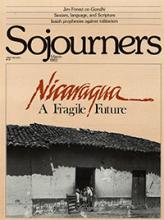A Miskito pastor reflects on the tension between his people and the Nicaraguan government.
Norman Bent is a Miskito Indian and a Moravian pastor whose home is on Nicaragua's East Coast. Many Miskito villages are located along the Rio Coco, the river that divides Nicaragua from Honduras. In recent months some Miskitos have crossed the border and joined the counterrevolutionary forces in Honduras.
A long history of mistrust has existed between the Spanish-speaking people of the West Coast and the Indians, Sumo and Rama as well as Miskito, in the East. In the interview that follows, Bent outlines that history, the current situation, and his hopes for the future relationship between his people and the Sandinista government.
At the time of the interview, Bent was under government order not to return to the East Coast. The day before we left Nicaragua that ban was lifted by the Sandinista leadership.
We interviewed Bent, in a Moravian church in Managua, where he is temporarily serving as pastor. The church also serves as a refugee center for Miskitos who have fled the frontier, where their villages have suffered attacks from across the border. Many of the refugees have relatives who have been accused by the government of being counterrevolutionaries and have been imprisoned in Managua.
The prayer "Under One Common Hope," was offered by Bent at the close of our time with him and is included in this issue. --The Editors
We read a great deal in the press in the United States about the tension between the Nicaraguan government and the Miskito Indians. Could you describe the current situation?
Read the Full Article

